Over the centuries, there have been many good ships that were named after the city of Visakhapatnam. The Indian Navy’s new pride and joy, the INS Visakhapatnam, honours that rich maritime history of Vizag, its naval heritage by naming it after the city. Launched in April 2015, the INS Visakhapatnam is the lead ship in a new class of stealth-guided weapons destroyers of the Indian Navy. Following her launch at the Mazagon Docks, fit-out and sea trials were interrupted by the impact of the Covid-19 pandemic on the skilled workforce at the docks. She was handed over to the Indian Navy in October 2021 and is due to be commissioned into service.

The first records of a ship named Vizagapatam Merchant appear exactly 300 years ago when Captain William Jones sailed the brigantine on the coastal trade from Porto Nova to Madras and then to Vizagapatam in 1721. The only nautical details of those times are navigation charts where some of today’s landmarks like Dolphin’s Nose, Mosquito Hill (Ross Hill), the Ishaq Medina Dargah (called a pagoda), and the high grounds of the Sand Hills and the Eastern Ghats near Waltair, were recorded.
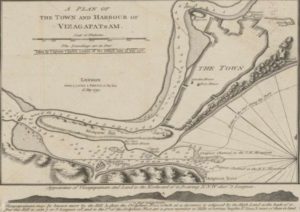
When battered by heavy seas and misadventures in the shallows off Visakhapatnam, visiting mariners marvelled at the skills of local craftsmen in repairing ships with a form of dry-docking that was studied as the Mud Docks of Vizagapatam by foreign navies. Located on the current site of INS Circars, these docks were used to construct the first ocean-going vessel in Vizag named Diana in 1821. Later, this vessel was to be modified at Kiddapore to become the first paddle steamer in India and saw naval action in the Anglo-Burmese War, followed by many years of service as a Pilot vessel on the Hooghly.
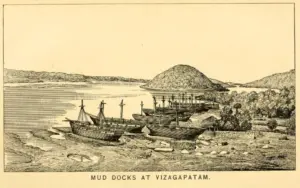
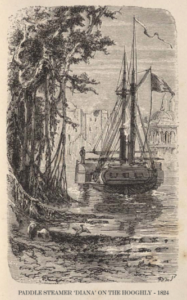
To understand the rich naval heritage of Vizag, one needs to realise how the Vizagapatam Harbour came to be. For over 100 years, many experts offered opinions on the design of a harbour for Vizag. There were plans for an Outer Harbour and then an Inner Harbour and views on how to manage the tides, the silt and the shallow waters of the entrance channel. These plans were realised in 1916 when the Government sanctioned the building of the Inner Harbour and appointed the Bengal Nagpur Railway to lead this construction. The key infrastructure for the building of the harbour was the new suction dredger SD Vizagapatam, designed by Sir J.H Biles & Co Naval Architects. It was launched by Mrs. Julia Cartwright Reid (wife of Col Herbert Cartwright-Reid) at the Clyde slipways of Simons & Co in 1925. Col. Cartwright-Reid was the British Admiralty expert on harbour construction who had taken up residence in Vizag as the Engineer-in-Charge for the project.
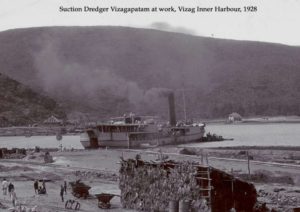
The SD Vizagapatam arrived off Visakhapatnam on the 24th January 1927, and commenced dredging the sandbank at the channel entrance and the widening and deepening of the channel to permit ocean-going ships to transit. At the same time, the non-propulsion Dipper Dredger DD Waltair, built by Lobnitz & Co, Renfrew, Scotland for the Government of India in 1926, made a start on dredging the channel to the inner harbour on 31 January 1927 to enable the Suction Dredger Vizagapatam to enter the backwaters for the major dredging task. Following the erection of the jetties, breakwater and other infrastructure, the new Vizagapatam Harbour was open with fanfare in December 1933.
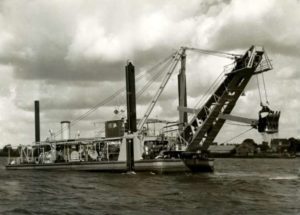
The HMS Colombo was the first naval vessel to enter the new harbour in 1935 and this was about the time that a naval training facility was first established in Vizag. Following the Japanese bombing of Vizag in April 1942, the role of the navy and the town in coastal defence and patrols in the Bay of Bengal took on a new emphasis. Operation Zipper was to be an invasion force for Malaya that was larger than the Normandy D-Day landing and operational preparations were conducted in Vizag. At about this time, a large order for Coastal Defence Naval Trawlers was initiated and the keel for T313 RIN Vizagapatam was laid at Kiddapore.
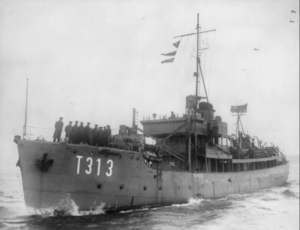
The end of World War II resulted in this vessel not being commissioned into navy service. To inaugurate INS Circars, the flagship of the Indian Navy INS Delhi sailed into Vizag in 1949.
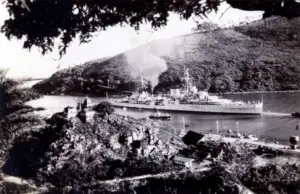
Visakhapatnam also lent its name to other commercial ships/vessels such as the Far Vizag, a container vessel SSL Visakhapatnam and the replacement dredger Visakha.
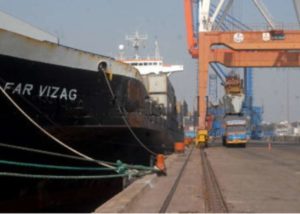
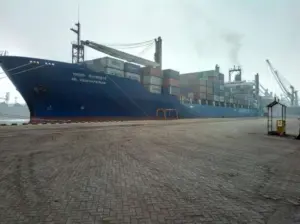
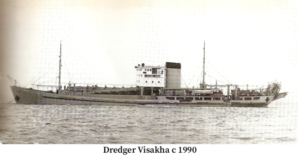
After three centuries, Vizag is again honoured by the commissioning of the naval ship INS Visakhapatnam. On her maiden voyage, as she first approaches the Vizag harbour channel entrance, we may well see her ‘fully dressed’ in naval tradition. With the crew lining her deck, distinguishing pennants hoisted on her mainmast, the national flag on her Jackstaff, they offer a salute to Vizag’s centuries-old landmarks of the temple, mosque and church shrines on Ross Hill that border the navigation channel. As ancient mariners did, the Indian Navy may well invoke the ‘Blessings of the Gods for the Good Ship INS Visakhapatnam and all who sail in her!’
This article is a part of a nautical series, being published by Yo! Vizag to honour the commissioning of INS Visakhapatnam.
Written by John Castellas whose family belonged to Vizag for 5 generations. Educated at St Aloysius, migrated to Melbourne, Australia in 1966, former General Manager Engineering at Boeing & Qantas Airways, in retirement Lecturers in Aviation Management at Swinburne University and is a Vizag aficionado.


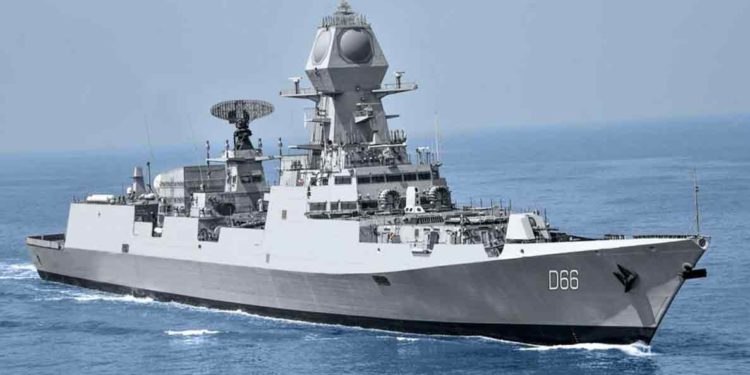







Discussion about this post